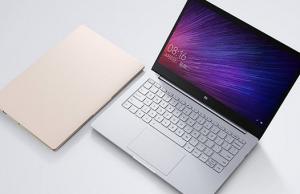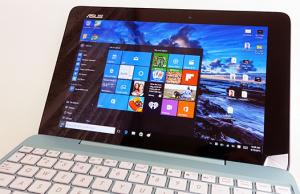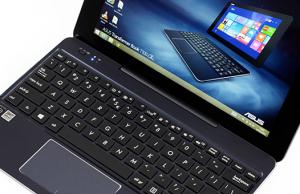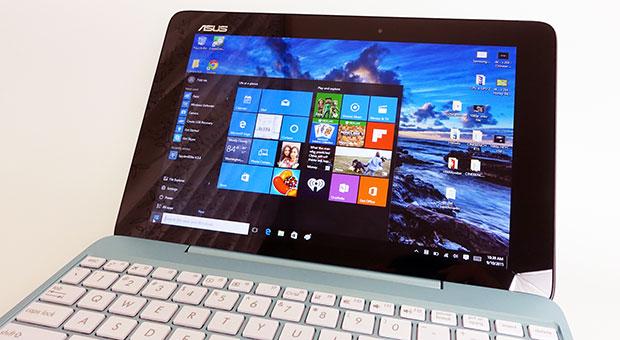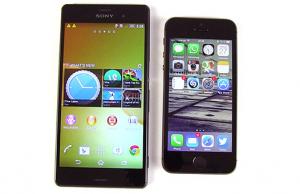It’s like only yesterday Intel announced the Ultrabook standard, the next logical step into ultra thin, ultra portable personal computers. Before we could get our heads around the amazing features these skinny laptops could have- a maximum thickness of 0.8 inches, tablet like responsiveness, strong Intel hardware, long battery life– a couple of the most important manufacturers out there stood up and introduced ultrabooks in late 2011, which is pretty cool to start with, considering that some rumors claimed that these computers will make their way to the market only in 2012.
Maybe the ultrabooks we have right now are not as accomplished as the “true” ultrabooks will be, a few months from now or even later, when Intel will release Ivy Bridge, a platform especially tailored for this standard. Maybe Windows 7, the OS of choice for basically all ultrabooks, is not quirky or fast enough to offer an unprecedented experience on a laptop and only Windows 8 will make it justice.
Even so, these 4 or 5 ultra slim laptops gathered under the “ultrabook” moniker are probably the most spectacular entries in the computer realm for quite a while (is there a netbook you’re really excited about?) and they make us daydream about what’s to come.
And, equally important, there are finally solid alternatives for the MacBook Air. Next, let’s take a look at the ultrabooks currently available and try to see if there’s a clear winner in this high octane race.
Acer Aspire S3- affordable and groundbreaking
The S3 is the most affordable ultrabook currently available- maybe because it’s not a pure ultrabook, so to say. The S3 comes with a hybrid storage system, meaning that it has both an SSD and an HDD on board, while all the other ultrabooks keep it pure and only use SSD drives. While there’s a little extra bulk on the S3 because of the HDD- and poorer battery life, you gain so much storage space and enjoy a decent price cut.
The S3 has the worst finish and build quality of all current ultrabooks, which is not to say it’s not bearable. The lid is made out of magnesium, while the palm rest and the rest of the chassis are made out of plastic- not even the good kind. It feels cheapo here and there, but for a budget ultrabook, does its job pretty good.
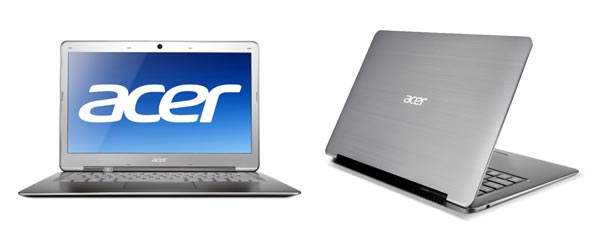
Acer Aspire S3- entry level ultrabook at a good price
Especially considering that it packs a Core i5-2467M, 1.6 GHZ processor and 4 GB of RAM, a configuration solid enough to run productivity and entertainment apps quite easily. OK, you can’t use it for gaming, but you don’t buy an ultrabook for playing shooters, don’t you?
The 0.7 inch thick S3 starts at 898 bucks, being at least 100 bucks cheaper than most of the competitor ultrabooks, without compromising too much on performance. Maybe the design is not as top notch as on other ultrabooks, but it’s a compromise worth making for a serious price cut.
Asus U31x- metal on metal
The Zenbooks, as they’re called, are Asus’s try at the ultrabook sector and come with either an 11.6 inch screen- the U21x or a 13.3 inch display- the U31x. Unlike the S3, which is made primarily out of plastic, the U31x has a metal coating that goes all around the machine and around the keyboard. The mini laptop feels very solid, even if it’s only 17 mm thin and about 2.4 pounds heavy.
So it’s definitely an ultra thin and ultra light contender, and things are equally impressive when we look under the hood. Like the Acer S3, the U31x packs a second generation, Core i5 processor, but can also be tailored with Core i3 and Core i7 chips. The amount of RAM is standard, namely 4 GB, while in terms of storage you can choose between 64, 128 or 256 GB of SSD, so no HDD option on this one.
The U31x is priced accordingly, with the cheapest version ticking in at $1099, while the cheapest U21x goes for 100 bucks less.
Toshiba Portege Z835- classy and accomplished
Toshiba’s Portege might just be the classiest ultrabook in terms of looks and design. It’s sleek and stylish and the metal finish and exquisite design are clearly making an impact with professionals looking for the ultimate portable computer. The Z835 is also one of the slimmest of the ultrabooks, as it’s only 16 mm thin and weighs a mere 2.4 pounds, just like the Asus u31x.
The Portege also has one of the best keyboards on an ultrabook, as the keys are very sturdy and don’t flex, while being quiet as well. Add to that the fact that it’s spill resistant and backlit, and you’ve got yourself one of the best keyboards on a laptop either way. On the inside, you’ve got a Core i3 processor and 4 GB of RAM, as well as a 128 GB SSD. Would have been nice for Toshiba to offer a range of Sandy Bridge processors to choose from, but even so, the configuration is good enough for office apps, presentations and HD video chatting, so this could definitely be a top notch work laptop.
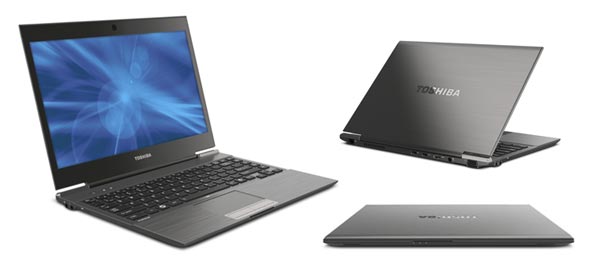
Toshiba's Portege is slim and classy- too bad it doesn't pack top hardware
Too bad the battery inside can go on a single charge for a maximum of 5 and a half hours, but I guess corners had to be cut in order to end up with that anorexic profile. And with a starting price of $899, the Z835 is also quite affordable in the ultrabook category.
Lenovo U300s- sturdy business computer, as always
We’ve come to expect a certain standard from Lenovo and the U300s dully delivers. It’s a strong and tough computer, covered in a resistant rubber coating, available in either orange or grey. Yes, this is a Thinkpad and it shows in every corner of it. The keyboard is as sturdy and comfy as always, so the fact that the ultrabook is less than 15 mm thin and weighs only 2.86 pounds didn’t mean that quality had to be lost in essential departments.
The display has a HD resolution of 1366 x 768, while the hardware inside is pretty standard for the category- a Corei3/ i5/i7 processor and 4 GB of RAM, as well as SSD storage, so expect very fast boot times. The battery can go on a single charge for around 4 to 5 hours, which is not great, but considering how slim the U300s is, is still a pretty sweet deal.
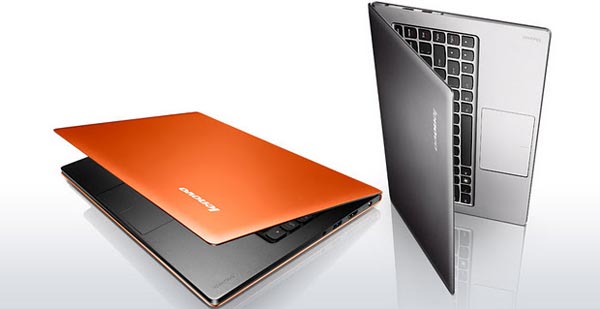
This is a Lenovo throughout- sturdy, classy and perfectly executed
The U300s starts at 1049 bucks, which makes it a little more expensive than the Portege and the S3, but more affordable than the Zenbook, so the U300s is the “middle choice” right now if you’re shopping for an ultrabook.
What’s to come?
Of course, more companies will start producing ultrabooks as 2012 gets closer and closer. It’s said that 2012 is the year for ultrabooks to flourish and for this you need solid competition so that users can chose the truly best ultrabook for their needs. Gigabyte will have a crack at it, as the component manufacturer has a history of decent portable computers in the last year. The still unnamed ultrabook will run directly on Ivy Bridge hardware, thus being closer to the ultrabook credo than all of the devices mentioned in this article.
Fujitsu will give it a try as well, as a couple of slim laptops have been spotted in the wild and from the looks of it, they are ultrabooks before anything else. The two laptops have 11 and 13 inch displays, with rumors claiming that at least the 11 incher will pack an Ivy Bridge chip.
Of course, as an alternative to all these ultrabooks, you could go for the MacBook Air, which is out for quite a while and comes in both 11.6 and 13.3 inch form factors. The hardware inside is Sandy Bridge, like in the case of all the ultrabooks listed in this article, as well as relying solely on SSD storage for ultra fast responsiveness and boot times.
Being only 0.68 inches thin and weighing a maximum of 1.35 kg- the larger version, the MBAs are considerably more expensive than ultrabooks, as the cheapest 11.6 inch version costs $999, while the best configured 13.3 inch version goes for $1599. But, truth be told, you get an accomplished machine that’s perfect in more ways than one- so if money is not an issue, go for it.
Conclusions
The ultrabook niche is still in its infancy, but we already have a couple of worthy entries. Every ultrabook present in this article has its strengths and weaknesses – the S3 is too bulky, the Portege could use a better processor and so on. But, what’s very important, all these ultrabooks are currently available and in comparison with mainstream laptops, they’re definitely much more interesting and appealing for everyday use.
And, before we can get our heads around it, future Ultrabooks, packing Ivy Bridge processors, optimized for ultra thin and ultra light laptops, will be all around us- just wait for CES 2012 in early January to come knocking.

